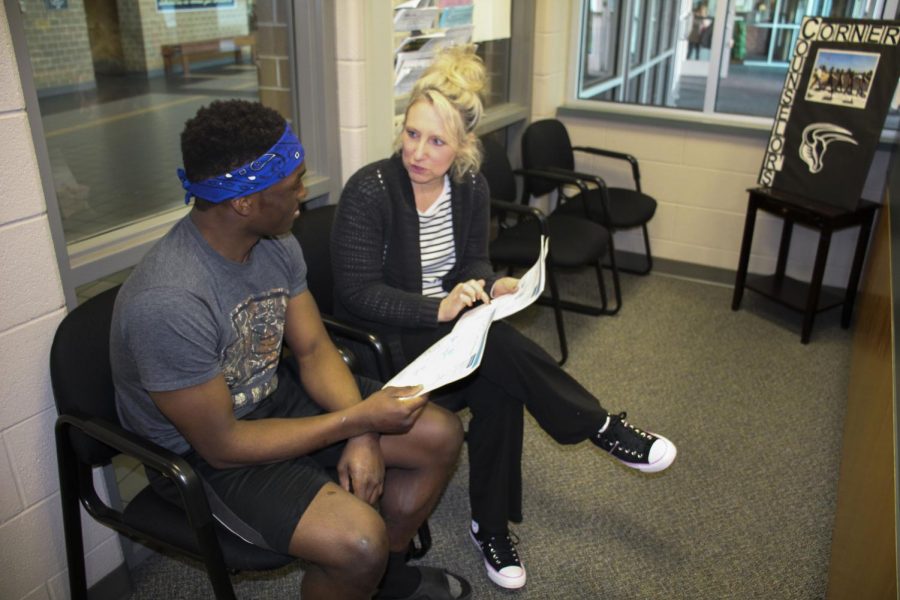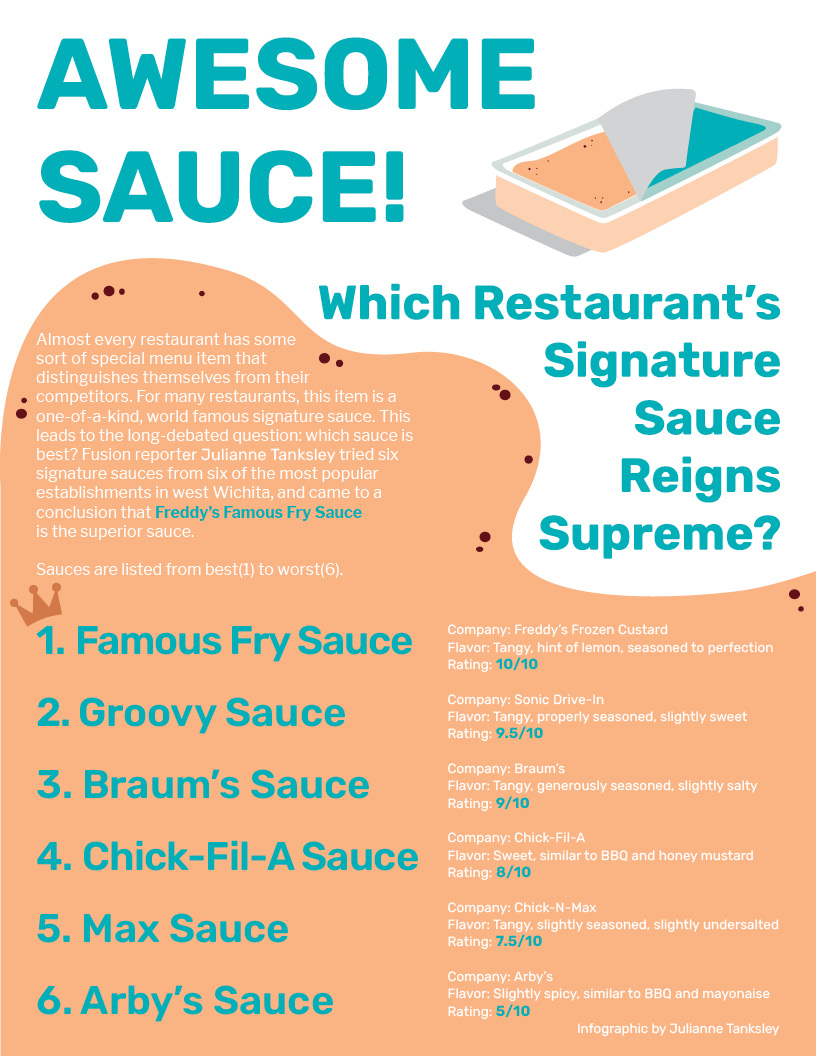Is College Really Necessary For All Students?
While student-debt and college drop-out rate increase, the fundamental quality and importance of a college degree should be questioned.
Counselor Tamara Luce explains a college parchment account to senior Lynauz Cox to inform him of college opportunities after graduation.
February 4, 2020
In 2012, President Barack Obama called a college degree an “economic imperative that every family in America has to be able to afford.”
According to the USD 266 district website, 98.3% of Maize South High students graduate high school compared to the 85.9% average graduation rate of Kansas. This is a significantly higher percentage than surrounding schools. In addition, around 82% of Maize South graduates go on to attend higher education.
While he was in office, Obama also pointed out a valid concern to teenagers not only in our school but across the country.
The culprit? The absurd cost of higher education.
The average student debt after college is $40,000. College dropouts, current students, and graduates alike have racked up a total of 1.5 trillion dollars of student loans, 2.5 times larger than just 12 years ago in 2008, and 1 in 5 Americans have outstanding student debt after graduation.
However, factors that need to be considered are the individual deciding whether to go to college, the quality of colleges across the country, and the value of a college degree in today’s job market. According to the numbers, both the quality of college and the value of a degree have gone down, and we as a country should disregard colleges as an “economic imperative.”
The dropout rate shines light on the quality of college while students are there. Less than two thirds of students graduate, 30% of the two thirds being college freshman, and most of them being men as men dropout 20% more than women do.
This is due to the lack of incentive for colleges to create a better education, and more of an incentive to earn money. We as a society have created an expectation to go to college in the past several decades resulting in the surplus of college students which shifted the focus of universities away from education and more toward economic benefit.
Thomas Morrison, Maize South teacher, graduated with two bachelor degrees. One in physical education, and another in science. He believes that the extreme price inflation for college is due to colleges focusing on dollars rather than diplomas.
“We were pushed to go to college. We were pushed: ‘go to college. Go to college. Go to college,” Mr. Morrison, science teacher at Maize South said. “‘If you don’t go to college there’s nothing else. So I think so many kids were pushed to go to college; it flooded the market with all these kids and I think the quality of education went down because they had to keep it easy. It got turned from an institution of higher learning into a business.”

Across from the counseling office, students can see where 2020 graduating students have received scholarships to attend college for next year. These include Butler County Community College, Fort Hays and Bethel College.
The government took advantage of the massive demand to go to college, and the government started guaranteeing student loans in 1965, giving anyone the ability to attend despite their economic situation to attend without having to pay outright therefore allowing colleges to raise the price.
“I think the government purposely has screwed people over,” Morrison said. “Government intervention where I think it started out as a good idea that went wrong.”
If students can eventually sort through the mess of loans, scholarships, classes, and your newly found freedom in college on their own, they get their degree. While the value of the degree varies depending on the type, it does not have the value that it commonly is declared to have.
A common statistic cited is that college graduates have half the unemployment rate of high school graduates, however this does not take into account tech schools, trade schools, or the underemployment and job security of college graduates.
According to an Associated Press analysis from 2015, around 40% to 50% of college graduates are underemployed, meaning they work at low wage jobs that do not correlate with their degree, and another 2% being completely unemployed.
However, the increase of 2.3% from 2017 to 2018 of college funding and the boost to university programs appeal to people and believe it is a solution.
Senior Dylan Epke, who will be attending Kansas Wesleyan to play baseball, believes that a successful college experience comes from one’s ability to persevere.
“I think the quality of college has gone up,” said Epke. I think [college can be for everyone] with work ethic and a good attitude.”
Along with more programs, increased scholarships have been created in the last few decades as well. While more programs and scholarships can draw students in, it can’t account for student dropouts or overall affordability.
The solution is to break down the barrier that college is a necessity to live and shift towards an advocacy of different post high school options such as tech schools, trade schools, military, and even the workforce.
To students who are unsure about their options, teenagers are young, and just beginning their adult life. It’s okay to not know what direction you want to go in, and should take their time to consider.
“Figure out who you are,” Morrison said. “Kids don’t take the time to figure it out. So what am I for? What would I stand up for? What would I defend? What are my beliefs? What do I wholeheartedly believe in? You gotta figure out who you are.”





